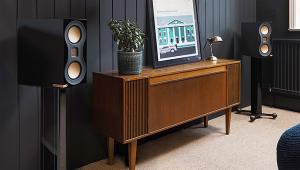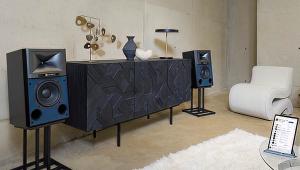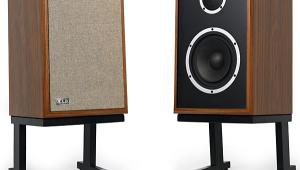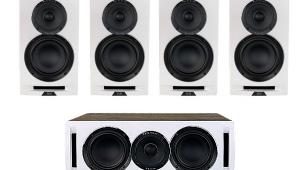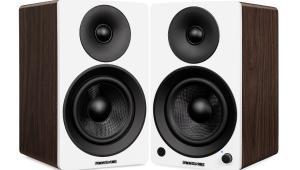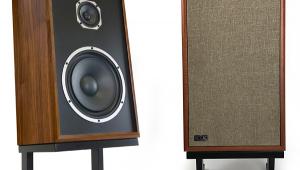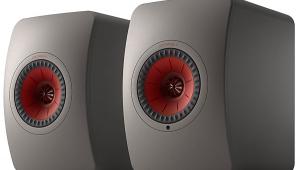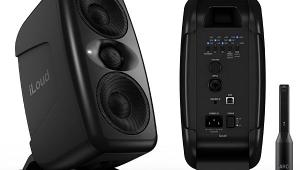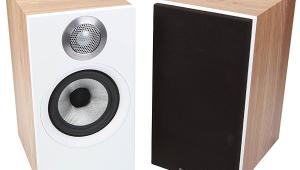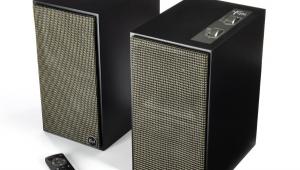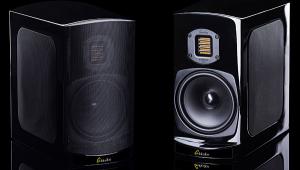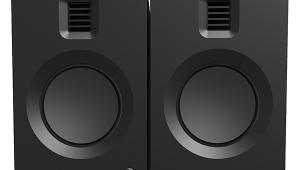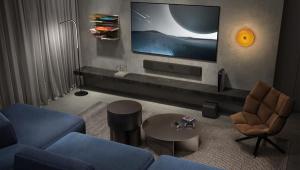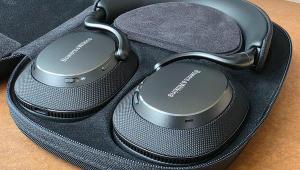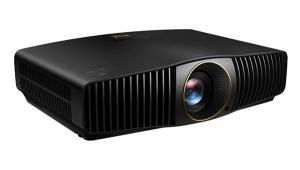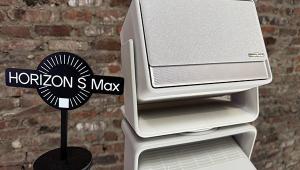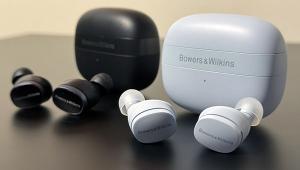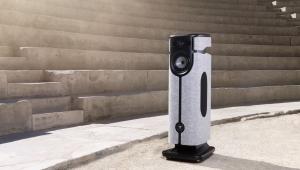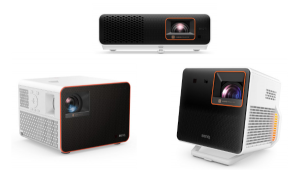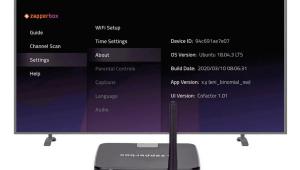Energy Veritas V-5.1 Speaker System
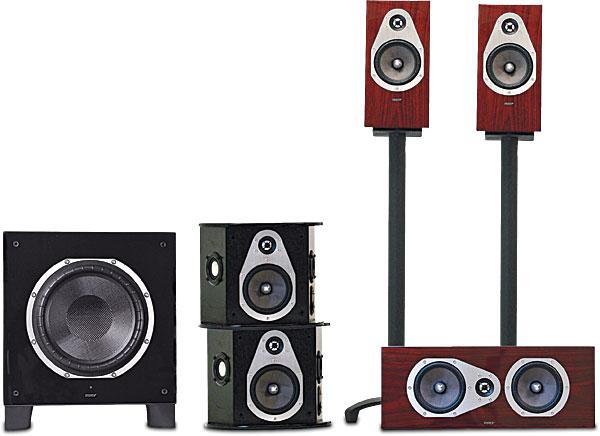
Veritas is the Roman goddess of truth. It’s also a distinguished speaker line from Energy. Since 1973, Energy has passed from its founders through various Canadian and American owners. In 2006, along with its stablemate Mirage, it became the property of Klipsch. Earlier this year, the Klipsch brands—Energy, Mirage, Jamo, and Klipsch itself—became the property of Audiovox. Although Audiovox also owns a couple of other ancient speaker brands (Acoustic Research and Jensen), in recent years, those brands have focused on car audio, personal audio products, small-scale video products, and accessories. That leaves the home theater niche wide open for Energy and the goddess of truth.
While Energy has long since lost its independence, it still holds the following truths to be self-evident: Listeners like flat frequency response, wide dispersion, and low distortion. And it’s possible to design those attributes into loudspeakers and make a lot of money. That’s what Energy’s founders discovered when they participated in blind listening trials at Canada’s National Research Council during the 1970s and ’80s and then turned what they learned into successful products.
Most of Energy’s current products are concentrated in the Veritas and Connoisseur lines. The Veritas line includes several surround speaker packages, including two tower-based systems, an LCR-based system, the monitor-based system reviewed here, and a compact satellite/subwoofer system. This review covers the V-5.1 package, which includes two monitors, a horizontal center, bipole/dipole surrounds, and a subwoofer for a total of $3,600.
Addictingly Beautiful
As someone who handles one black box after another, I loved the look of the V-5.1 monitor and V-5.2-C center as soon as I lifted them out of their cartons and loosened their drawstring bags. Their lustrous Rosenut veneer was deep, reddish, and addictively beautiful. If you’d prefer to match finishes all around, you can also get the monitor and center in the Piano Black used for the V-S surround and V-SW10 sub.

The V-5.1 monitor is a two-way speaker that stands just over a foot high in a simple rectangular enclosure. Energy supplies a foam plug to fill the back port, which might come in handy if you’re placing the speaker close to the wall and want to reduce bass output. Pop the magnetically attached grille, and you’ll find a 1-inch aluminum-dome tweeter and a 5.25-inch Kevlar-coned woofer. Kevlar is the same tough woven synthetic material used in bulletproof vests.
These two drivers are arranged in what Energy calls a Convergent Source Module (CSM). It accesses one of those eternal truths: List- eners like wide dispersion. CSM reduces lobing and improves dispersion by placing the tweeter and woofer close together, so that they act more like a single point source. To access another of the eternal truths—listeners like low distortion—Energy designed the Ribbed Elliptical Surround, which it says allows the woofer cone to move more linearly in each direction, achieving more than double the peak-to-peak movement of a conventional woofer while maintaining greater phase coherence. The woofer’s response is also regulated by the phase plug at its center.
The V-5.2-C is a horizontal center speaker with the same tweeter and two similar woofers. If you’d prefer to use this LCR-designated speaker across all three front channels, check out the V-5.2-C system ($4,400). The system reviewed here used just one in the center position. Like the monitor, the center has dual metal-nut speaker terminals for biamping or biwiring with factory-installed bridges.

With the V-S surround speaker, the plot thickens. On the front of its three-sided baffle are a tweeter and woofer similar to those used in the monitor and center. On the sides, it adds 2-inch aluminum-cone midrange drivers in separate chambers. A switch on the right baffle switches the midrange drivers between bipole and dipole operation, while a separate control allows for volume attenuation. In bipole operation, the output from the midrange drivers on the sides are in acoustical phase with each other. In dipole operation, the sides are out of phase with each other. The designers chose to give the bipole/dipole treatment to the midranges, as opposed to the woofers, to avoid diminishing bass output in dipole mode.
Energy recommends the dipole mode if you’re placing the surrounds to the sides of the main seating area. This would provide greater envelopment for those sitting in the sweet spot. Bipole operation—which I chose, because I like to move around—is arguably less dependent on placement and provides broader coverage for more listeners.

As noted, below the bipole/dipole switch is a dial that adjusts the level of the midrange drivers. At its minimum setting, it turns off the mids; at maximum, it matches the mid output with the tweeter and woofer. I used the factory-preset maximum. Unlike the monitor and center models, the surround doesn’t have dual terminals for biwiring or biamping.
On the V-SW10 subwoofer, the Ribbed Elliptical Surround reappears, this time cradling a 10-inch front-firing fiberglass woven composite cone woofer. Backing it is an internal amp rated at 300 watts RMS (using the more conservative specification method) or 1,200 watts peak.
